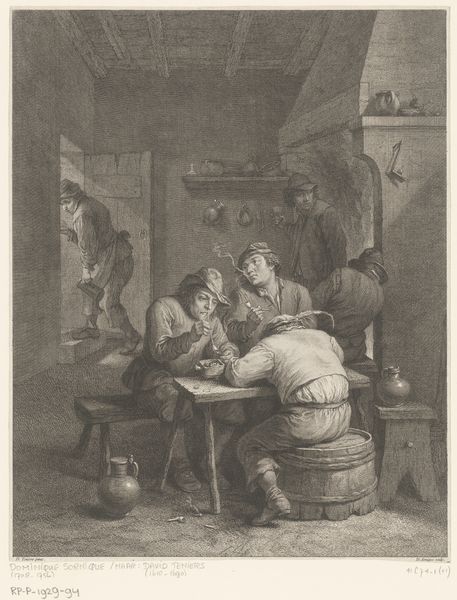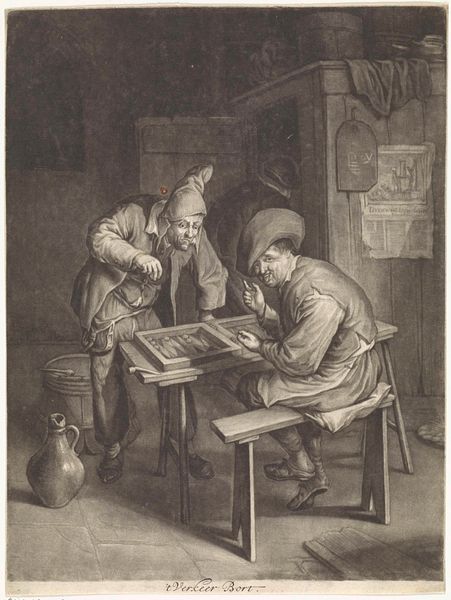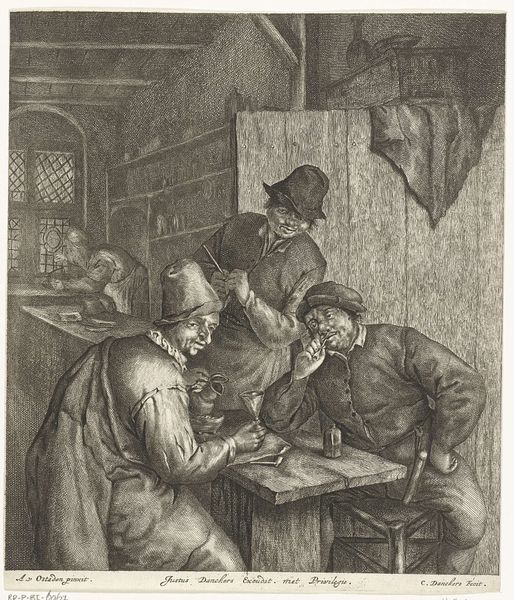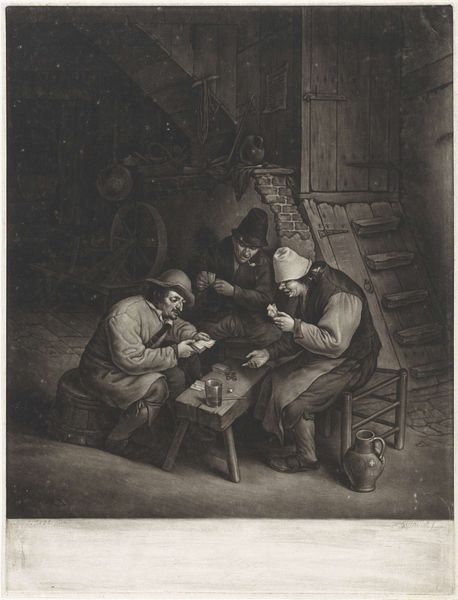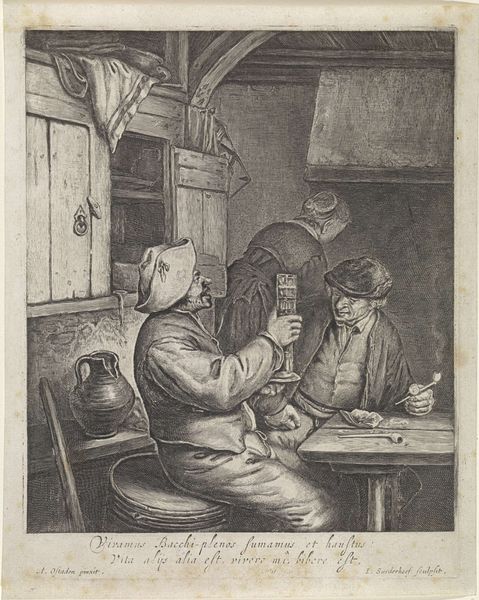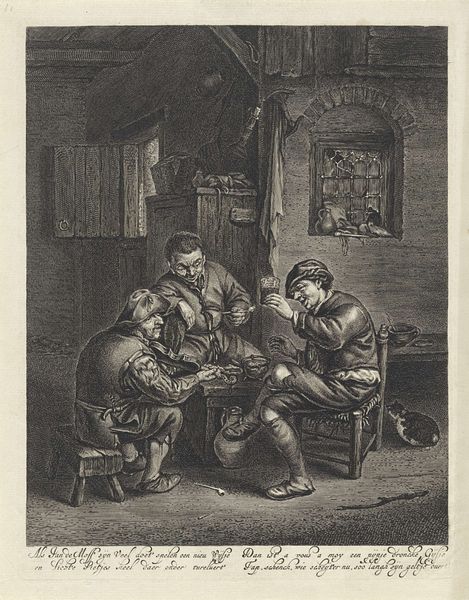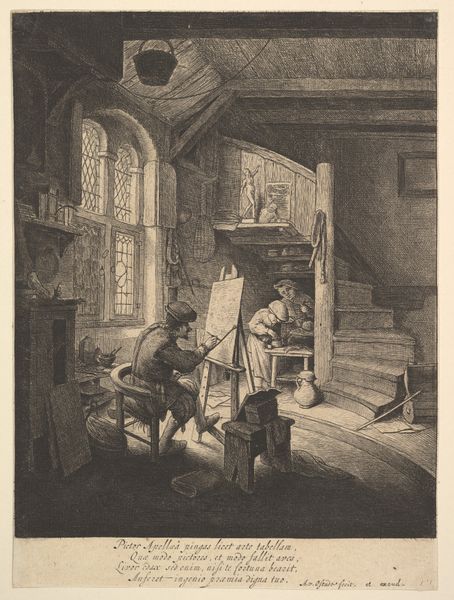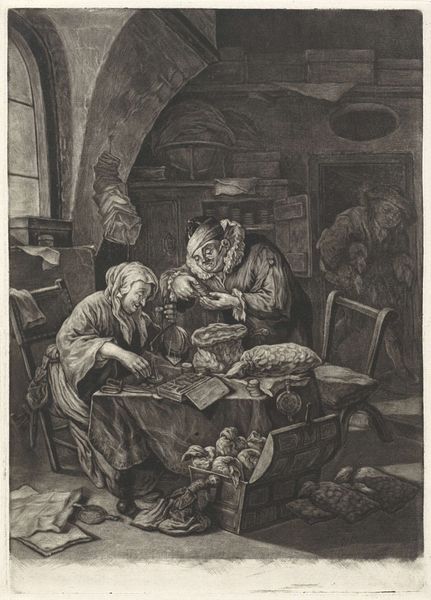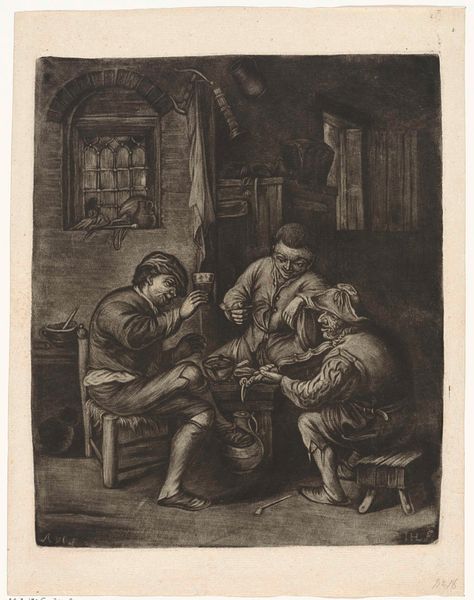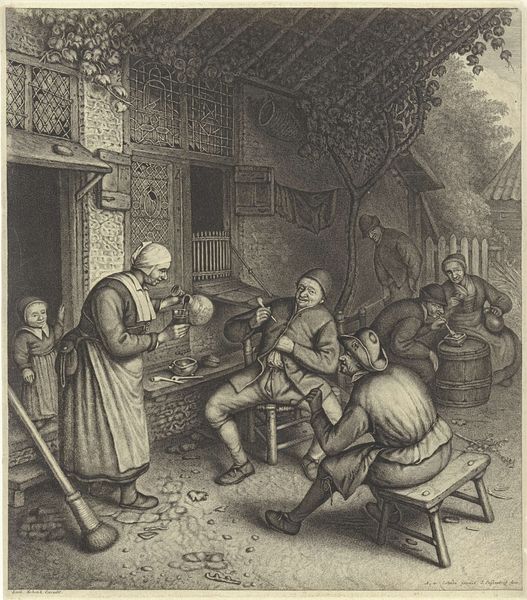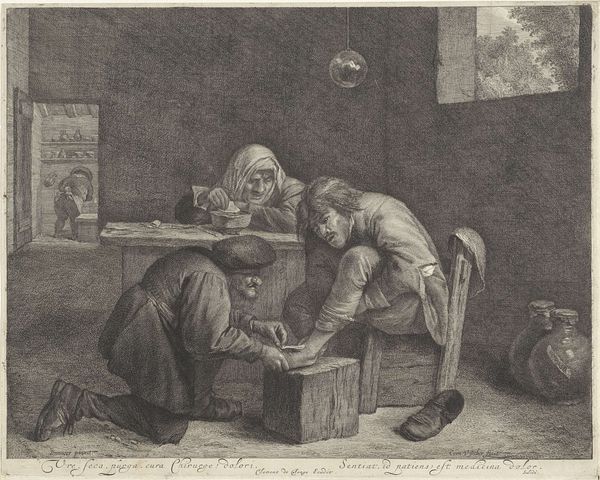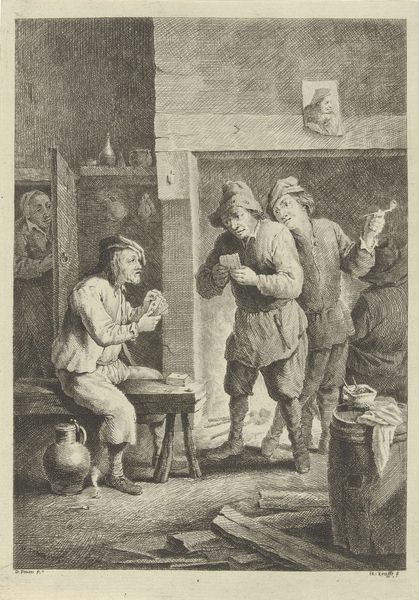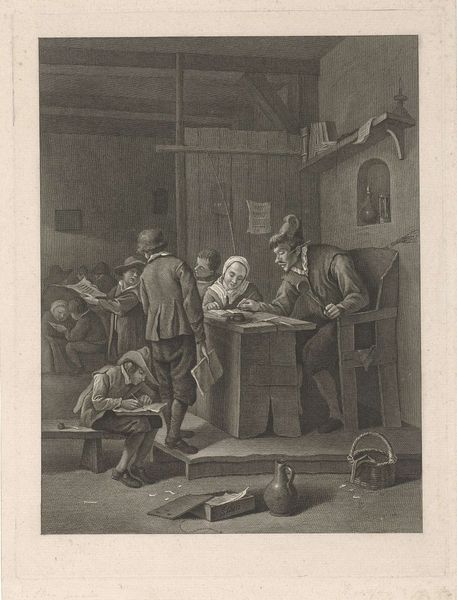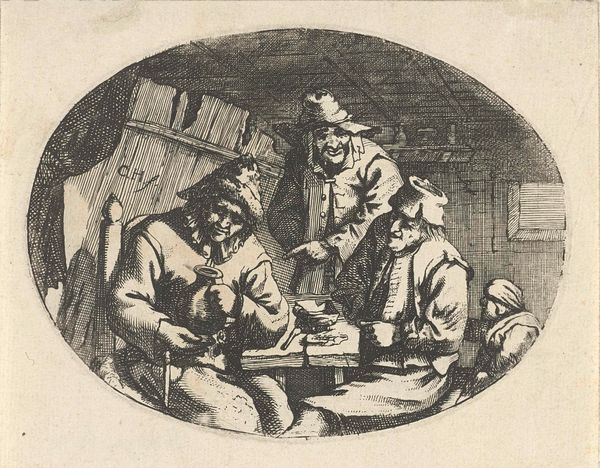
drawing, print, engraving
#
portrait
#
drawing
#
narrative-art
#
baroque
# print
#
pencil drawing
#
genre-painting
#
engraving
Dimensions: Sheet: 11 in. × 8 3/8 in. (28 × 21.3 cm)
Copyright: Public Domain
Editor: So, we're looking at "The Interrupted Game" – or "Le Jeu interrompu" – a print made sometime between 1730 and 1768, after a painting by Queriole Pezze, with an engraving by Delarüe. It depicts three people gathered around a table, and the scene seems pretty tense. I am struck by the somber, shadowy feel to this work. How do you interpret it? Curator: Considering its creation within the 18th century and its Baroque influence, what initially grabs my attention is how it serves as a window into social rituals around leisure. How do you perceive the interruption announced by the title? Is it an external event or internal conflict causing that feeling of tension? Editor: Good question. Perhaps a conflict? Maybe somebody lost? It does feel like the stakes are high for these people in this scene. Curator: Exactly. Genre scenes such as this one played a critical role. Notice how the setting, likely a tavern or home, positions this game within everyday life. Consider the implications, both societal and political. How would such a depiction of ordinary life play with viewers of the time, in contrast to, say, the aristocratic scenes of courtly life? Editor: So, the everyday setting, along with the title itself, makes me think this challenges traditional representations of the nobility? It makes the leisure of common folk valid, almost. Curator: Precisely. And look closer. This engraver emphasizes realism, placing emphasis on commoner experience at the expense of idealized beauty. But who *is* the "interrupter"? Does anyone or thing fill this role, besides some unfortunate draw in cards? Editor: I am starting to think it might be all about subverting societal norms, and representing the rise of different classes. Curator: Right. We also have the complex layers through the visual culture and print, since we are one step removed from Pezze. That raises key questions about social values. Thanks to you, now I want to examine prints such as this in order to consider both the artistic intent but also reflect on wider shifts in power.
Comments
No comments
Be the first to comment and join the conversation on the ultimate creative platform.
